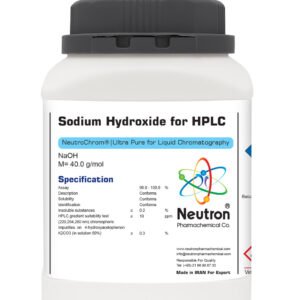Cyclohexane is a cycloalkane with the molecular formula C6H12. Cyclohexane is non-polar. Cyclohexane is a colourless, flammable liquid with a distinctive detergent-like odor, reminiscent of cleaning products (in which it is sometimes used). Cyclohexane is mainly used for the industrial production of adipic acid and caprolactam, which are precursors to nylon.
Cyclohexyl (C6H11) is the alkyl substituent of cyclohexane and is abbreviated Cy.
🏭⚗️ Production ,Modern industrial synthesis
Cyclohexane is one of components of naphtha, from which it can be extracted by advanced distillation methods. Distillation is usually combined with isomerization of methylcyclopentane, a similar component extracted from naphtha by similar methods. Together, these processes cover only a minority (15-20%) of the modern industrial demand, and are complemented by synthesis.
On an industrial scale, cyclohexane is produced by hydrogenation of benzene in the presence of a Raney nickel catalyst.[citation needed] Producers of cyclohexane account for approximately 11.4% of global demand for benzene.The reaction is highly exothermic, with ΔH(500 K) = -216.37 kJ/mol. Dehydrogenation commenced noticeably above 300 °C, reflecting the favorable entropy for dehydrogenation.
🧪 Reactions and uses
Although rather unreactive, cyclohexane undergoes autoxidation to give a mixture of cyclohexanone and cyclohexanol. The cyclohexanone–cyclohexanol mixture, called “KA oil”, is a raw material for adipic acid and caprolactam, precursors to nylon. Several million kilograms of cyclohexanone and cyclohexanol are produced annually.
It is used as a solvent in some brands of correction fluid. Cyclohexane is sometimes used as a non-polar organic solvent, although n-hexane is more widely used for this purpose. It is frequently used as a recrystallization solvent, as many organic compounds exhibit good solubility in hot cyclohexane and poor solubility at low temperatures.
Cyclohexane is also used for calibration of differential scanning calorimetry (DSC) instruments, because of a convenient crystal-crystal transition at −87.1 °C.
Cyclohexane vapour is used in vacuum carburizing furnaces, in heat treating equipment manufacture.



